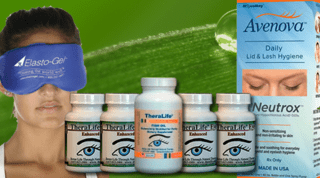Does COVID-19 Cause Eye Related Problems?
Covid-19 lock down creates all kinds of eye problems.
We see an increase in the number of dry eye diseases since the C povid-19 pandemic ramped up.
Masks
Since masks became mandated in a widespread fashion. This makes sense since people’s complaints about dry eyes have increased.
Eye glasses
People who wear both spectacles or sunglasses experience fogging. The exhalation vents through spaces in the top of the mask create a constant airflow when they exhale. Therefore most people who wear glasses have lenses fog up. This also means that a continuous stream of exhaled air passing over the corneas will make dry eyes worse.
Screen time
A tremendous increase in screen time during the Covid-19 pandemic, and you really have a perfect storm that is increasing symptoms for various people with various levels of dry eye disease. As a result, I believe that more and more people are voicing their complaints to their eye care providers.
Eye problems during the COVID-19 pandemic
Some of the common ocular “emergencies” have presented more frequently over the past several months, including dry eye disease (DED) associated with computer use and ill-fitting masks, corneal abrasions and foreign bodies due to home improvement projects, herpes simplex virus (HSV) and herpes zoster virus (HZV) flare-ups, along with episodes of central serous chorioretinopathy (CSC).
Home improvement projects during Covid-19 pandemic lock down
An increased amount of time at home has meant a boost in hours of digital screen time and home improvement projects for millions of people across the globe.
For some healthcare providers and essential workers, the pandemic has also meant an increased amount of time wearing a mask and frequent exposure to cleaning chemicals. Also, high psychological and physical stresses due to sudden changes in routine schedules may play a role in the overall risk of some ocular pathologies seen during the pandemic.
Eye diseases during Covid-19 lock down
Increased dry eye disease also increases the treatment for MGD and blepharitis because all three are related. People are aware that something is changing with their eyes and sustain close-up tasks comfortably.
Despite the access issue, telehealth has been an excellent resource for connecting with their eye doctors.
Is blurry vision a symptom of COVID-19?
Blurry vision is a classic dry eye symptom. Blurry vision is on the rise since the pandemic began one year ago.
If you have blurry vision, consult a dry eye specialist for treatment.
Is burning sensation a symptom of COVID-19?
Burning sensation, blurry vision, light sensitivity, and sandy-gritty are typical dry eye symptoms.
Pandemic causes increase in dry eyes, blepharitis, and MGD.
Requests for dry eye treatment procedures are up. LipiFlow, IPL, prescriptions for medications that can help reduce the inflammation like steroids, antibiotics for blepharitis infections. Many of these cases are now becoming chronic and unresolved.
“How can TheraLife Help?
Inflammation is at the center of this vicious cycle of dry eyes, blepharitis, and MGD. Therefore, unless all three are addressed simultaneously, the dry eye conditions repeat themselves and become chronic.
TheraLife developed a protocol that addresses all three
- TheraLife Eye capsules to restore tear function to treat dry eyes
- Omega 3 fish oil to
- Hot Compress – help to unclog the meibomian oil gland
- Avenova eyelid cleanser- to get rid of bacteria causing blepharitis ( eyelid bacterial inflammation).
TheraLIfe has a discounted Starter Kit to get you started on your journey to recovery.

Oral dry eye treatment when drops don’t work.
Causes of Pandemic Eye Problems.
- Computer-induced dry eye
Trying to avoid the COVID-19 virus that may be lurking on every doorknob, many companies and corporations have transitioned to work-at-home environments. This digital wave and virtual work world appear to be here to stay.
Millions of people now work on their computers and digital devices full time. It is not surprising to see increases in symptomatic complaints of burning, watering, ocular pain, eye strain, and intermittent blurring vision.
Prolonged digital devices are likely associated with decreased blink rates and increased tear evaporation, leading to tearing film instability and hyperosmolarity.1 This vicious dry eye cycle paired with computer use can eventually lead to a decreased tear break-up time, worsening symptoms of dry eye disease.
Subjective dry eye symptoms can be influenced by psychosomatic conditions, including stress, anxiety, and depression.
Conventional treatments
With an array of treatments, from artificial tears to punctal plugs to pharmacologic options that improve tear film stability, educating patients on the short- and long-term consequences of extended digital computer use can help stop the cycle of dry eye disease.
You can get the dry eye questionnaires and information before going to the eye doctor. This can help identify potential dry eye disease factors or problems ahead of the appointment and decrease office exposure time.
- Mask-induced dry eye
With the addition of mask mandates across the world, dry eye signs and symptoms have risen since mid-March. Healthcare providers and essential workers are now wearing masks or facial coverings for upward of 40 hours per week.
Mask-associated dry eye disease symptoms are worse when there is a constant exhaled airflow on the sensitive eye while breathing. Eye pain plus intrapalpebral corneal staining are often present. The escaping airflow can create a windy obstacle affecting tear film stability. The frequency of mask-wearing seems to be correlated with the increased frequency of dry eye disease recently seen.
Mask-wearing is very effective in lowering the rate of viral transmission. Properly fitting masks to reduce airflow directed at the eyes and mask usage are also essential to reduce risk factors for dry eye disease.
- Corneal abrasions and foreign bodies
With additional time at home, more people than ever are completing projects and finishing up honey-do lists. Indoor and outdoor projects have resulted in more ocular injuries such as corneal abrasions and foreign bodies.
There seems to be an increase in ocular injuries since quarantines began. These injuries are ranging from “abrasion caused by mask” to “stick in the eye while doing outdoor chores” to “metallic foreign body while grinding metal. Wearing safety glasses will reduce these incidents a lot.
- Herpes simplex virus (HSV) and herpes zoster virus (HZV)
Psychological and physical stresses associated with abrupt changes to daily life are associated with some ocular pathologies’ overall risk, especially amid a pandemic.
Stress
Stress can modulate an individual’s immune system by releasing specific molecules. Such release signals other molecules to alter the host immune system, leaving it susceptible to a primary or recurrent viral infection.
Herpes
Stress is also thought to contribute to the reactivation of latent herpes simplex virus (HSV). It has been considered a trigger for the herpes zoster virus (HZV). This connection with stress and HSV/HZV has been supported by several but not all studies. The effects of phycological and physical stress during a pandemic, and its effect on HSV and HZV activation or reoccurrences are significant.
Pre-pandemic, one clue that tips off the increased risk for HSV-1 in the eye is a fever blister noticed on the lip during an exam. Wearing a mask hides these important observational details; therefore, it may be essential to ask about the history of cold sores and fever blisters hidden from view. .
- Central serous chorioretinopathy (CSC)
Predominantly, CSC affects young or middle-aged adults (25 to 50 years old), with men more frequently involved than women. Presentation is often painless blurred vision and a shallow serous retinal detachment. Some people may be asymptomatic.
Stress
Physiological stress is considered one of the most critical risk factors for developing CSC. Stress scores, serum homocysteine levels, serum morning and evening cortisol levels, and systolic and diastolic blood pressure were all elevated in CSC patients.
CSC occurs more frequently in “Type A” men with higher emotional stress, lower frustration tolerance threshold, and poor coping strategies for stressful events.
90-95% of CSC cases are typically self-limiting with spontaneous resolution over many weeks or months. In addition to identifying the stressors, CSC patients should also consider a routine workup with stress score evaluation, including measuring blood pressure, serum homocysteine levels, and serum cortisol levels.7
Conclusion
In conclusion, our new “normal” during the pandemic may contribute to an increase in eye problems.
Considering risk factors such as hours of digital screen time, mask-wearing, and overall stress levels may help identify those more susceptible to ocular problems.
Ocular emergencies are presenting more frequently. Amongst them are dry eye associated with computer use and ill-fitting masks, corneal abrasions and foreign bodies due to home improvement projects, herpes simplex virus (HSV), and herpes zoster virus (HZV) viral infections, and central serous chorioretinopathy (CSC).
Post-pandemic, it will be interesting to see retrospective data regarding the global incidence of ocular problems more frequently seen since quarantine. For now, it is of vital importance that optometrists treat patients and keep them out of the emergency room.
References
- Kim KW, Han SB, Han ER, Woo SJ, Lee JJ, Yoon JC, Hyon JY. Association between depression and dry eye disease in an elderly population. Invest Ophthalmol Vis Sci. 2011 Oct 10;52(11):7954-8.
- Uchino M, Yokoi N, Uchino Y, Dogru M, Kawashima M, Komuro A, Sonomura Y, Kato H, Kinoshita S, Schaumberg DA, Tsubota K. Prevalence of dry eye disease and its risk factors in visual display terminal users: the Osaka study. Am J Ophthalmol.2013 Oct;156(4):759-66.
- Chida Y, Mao X. Does psychosocial stress predict symptomatic herpes simplex virus recurrence? A meta-analytic investigation on prospective studies. Brain Behav Immun.2009 Oct;23(7):917-25
- Sainz B, Loutsch JM, Marquart ME, Hill JM. Stress-associated immunomodulation and herpes simplex virus infections. Med Hypotheses. 2001 Mar;56(3):348-356.
- Glaser R, Kiecolt-Glaser JK. Chronic stress modulates the virus-specific immune response to latent herpes simplex virus type 1. Ann Behav Med. 1997 Spring;19(2):78-82.
- Semeraro F, Morescalchi F, Russo A, Gambicorti E, Pilotto A, Parmeggiani F, Bartollino S, Costagliola C. Central Serous Chorioretinopathy: Pathogenesis and Management. Clin Ophthalmol. 2019 Dec 2;13:2341-2352.
- Agarwal A, Garg M, Dixit N, Godara R. Evaluation and correlation of stress scores with blood pressure, endogenous cortisol levels, and homocysteine levels in patients with central serous chorioretinopathy and comparison with age-matched controls. Indian J Ophthalmol. 2016 Nov;64(11):803-805.




